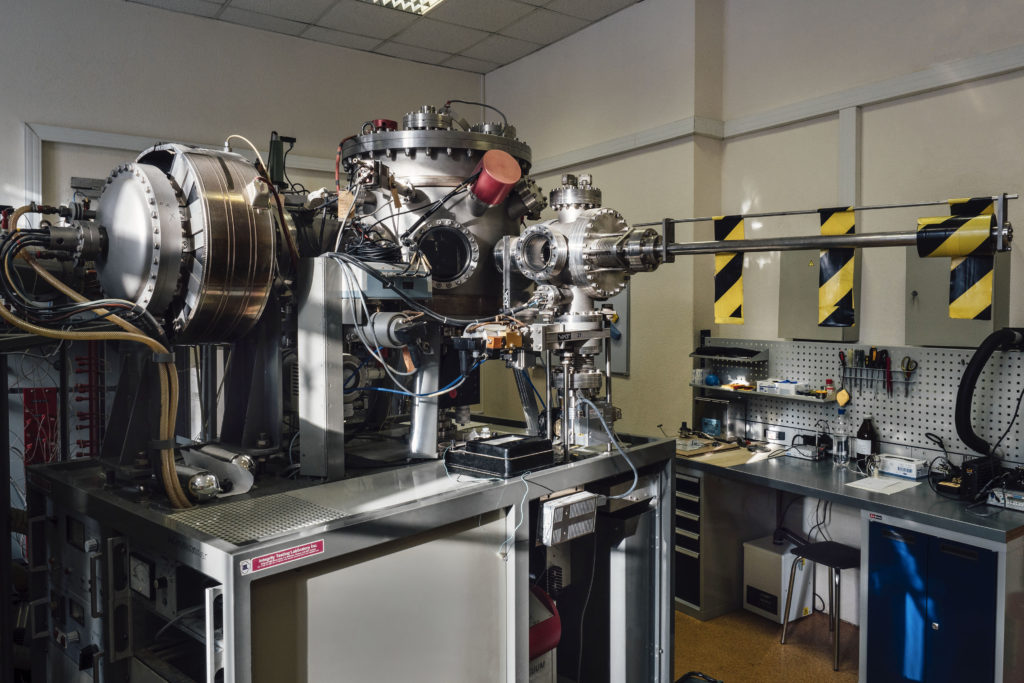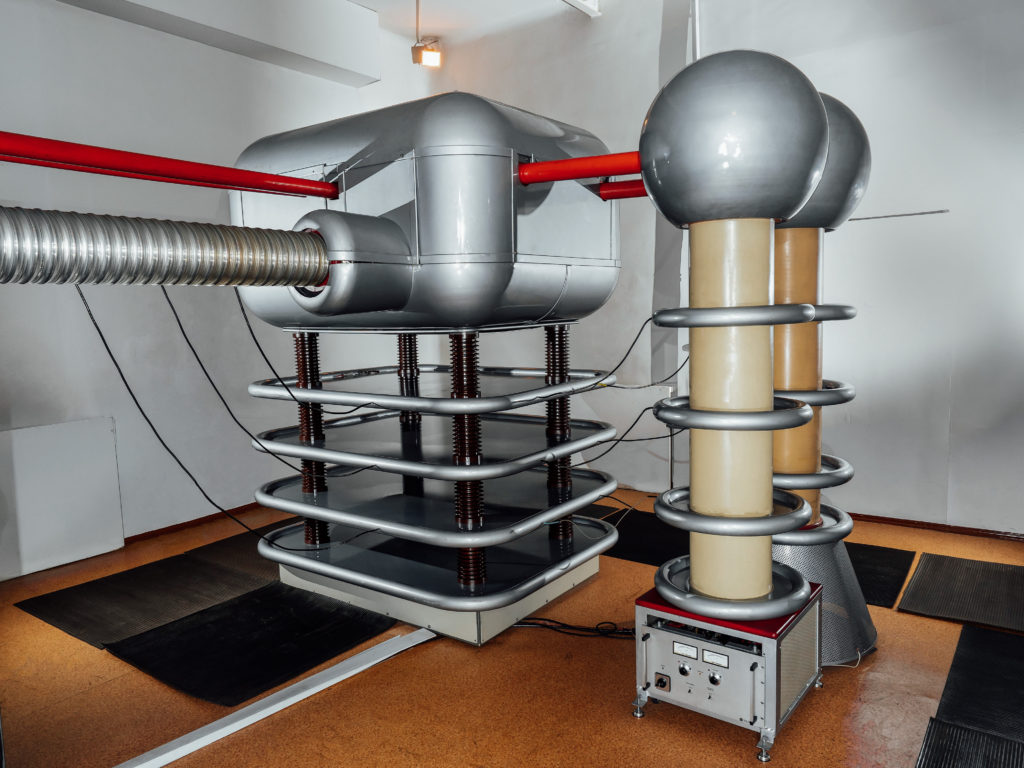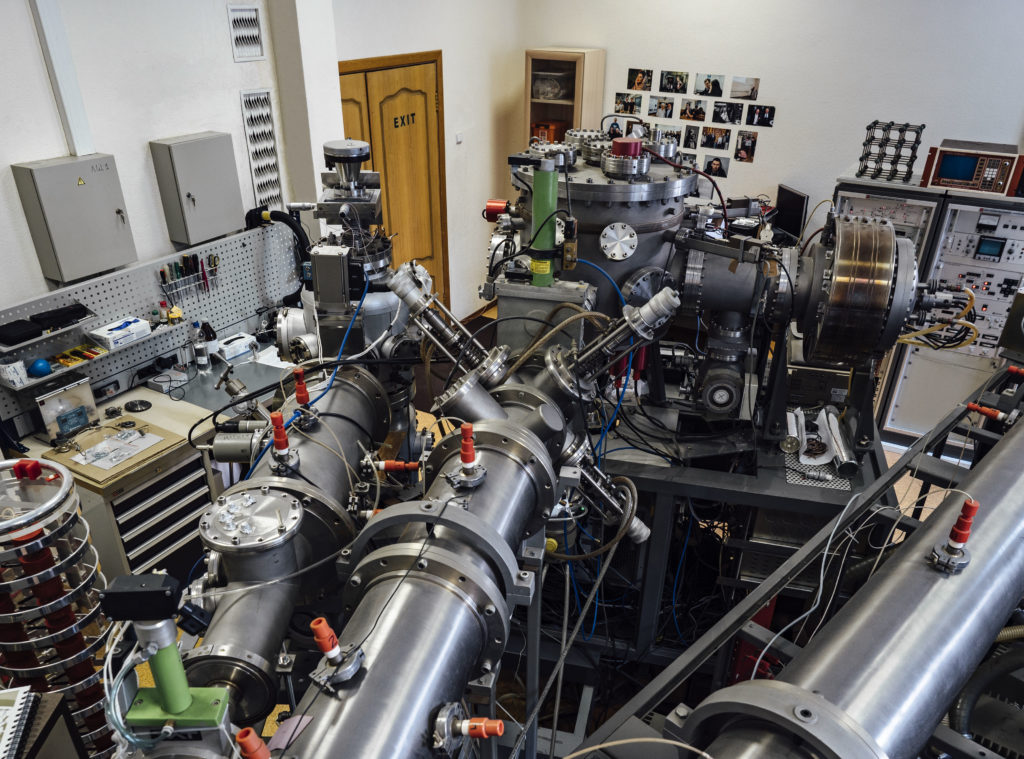In our laboratory, ion-beam techniques are implemented for the modification and analysis of surfaces, thin films and nanostructured materials .
The modification of materials under ion beam irradiation is caused by the introduction of atoms into the surface layers in the eV to MeV energy range. A wide range of physical properties that are sensitive to the presence of introduced atoms or structural defects includes the mechanical, electrical, optical, magnetic and superconducting characteristics of materials. The use of accelerated ions makes it possible to introduce any desired chemical elements or create structural defects and obtain impurity concentrations and distributions of particular interest; in many cases, these distributions would not be achievable by other techniques.

Many of the existing methods for studying the surface, thin films, and nanoscale structures have several drawbacks, namely, some are destructive, while others have insufficient resolution of the distribution of elements in depth or low sensitivity. Ion-beam methods lack the above disadvantages. With their help, the elemental composition of coatings and modified solids is determined, depth distribution profiles of impurity or implanted atoms are studied, the structures and thicknesses of layers in multilayer coatings are determined, as well as the processes of interdiffusion in these layers, and the results of defect formation under various influences are observed.

To develop these techniques at Moscow State University, on the basis of the Physics Department, SINP MSU and “TENZOR”, a joint laboratory of ion-beam nanotechnologies was founded by Prof. V.S. Chernysh on March 24, 2006. In this laboratory, advanced ion-beam technologies were combined (a wide range of ion implantation energies, cluster ion beams, ion beam focusing), which are widely used in micro- and nanoengineering. The capabilities of the laboratory allow us to study the radiation resistance of solid-state materials, as well as to study the effect of ion beams on biological systems. Accelerator complexes of the laboratory allow both material modification and research using ion beams. Some methods are unique not only for our country, but also for the whole world. The work of users in the laboratory allows to fulfill innovative ideas.

